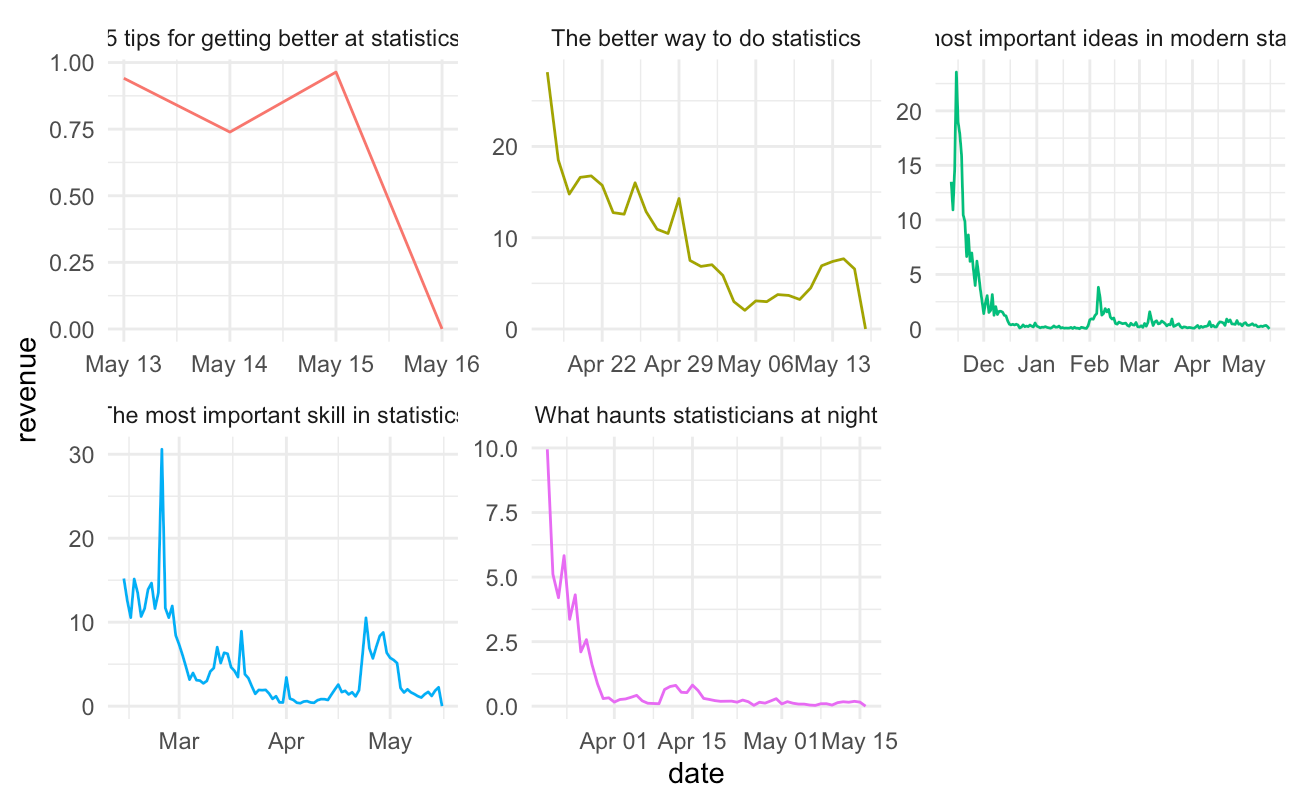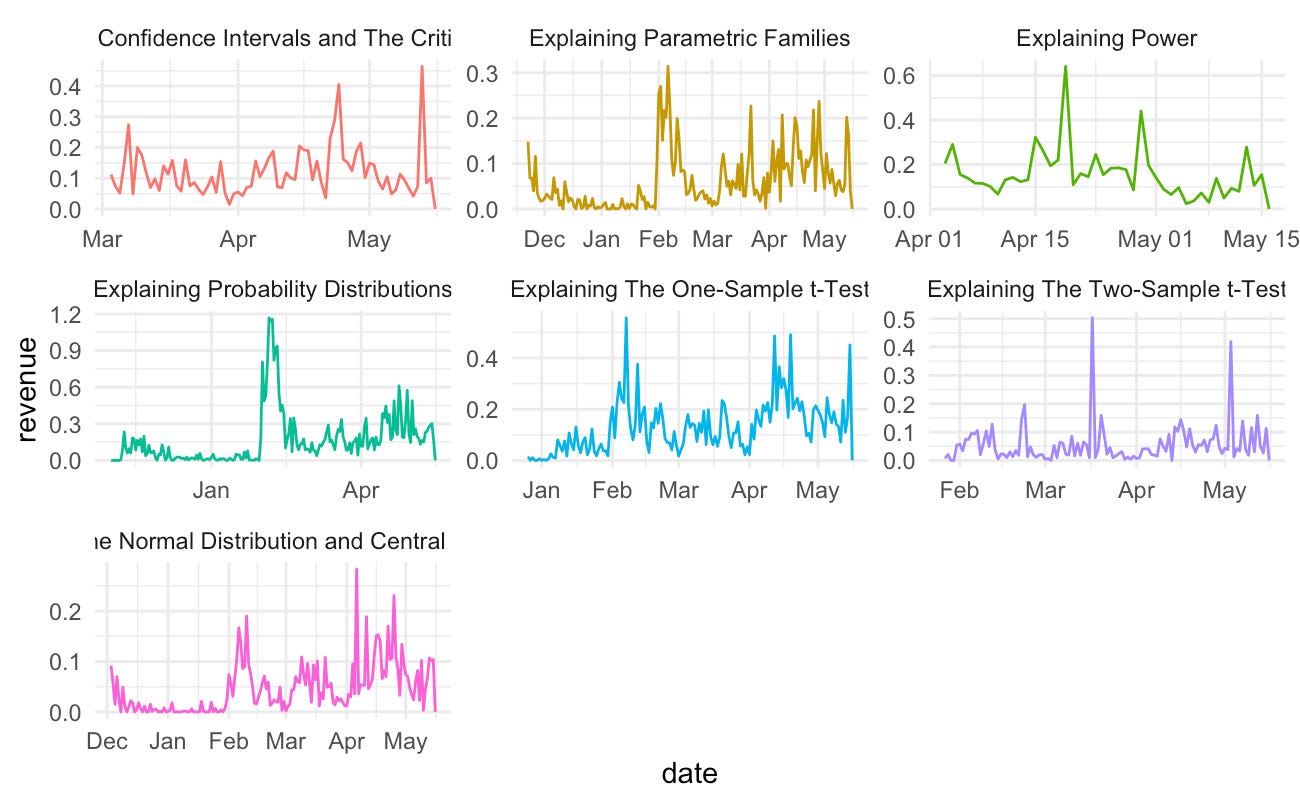Issue #18: A realistic look at creating evergreen content
The supposed golden goose of YouTube, but what's it really like?
Use book summaries to learn before you buy (Sponsor)
I read a lot. But sometimes, I’m not sure if I should commit to buying a book if I’m not sure what it’s about. But thanks to Shortform, I can increase the value I get from even more books and better judge which ones I should delve into more.
Shortform provides curated, high-quality summaries of the main points of several books, and even offers outside perspectives to provide more context. You can get the gist of the most popular books and make informed decisions on if you want to read the book for more details. They also provide audio readings of their summaries, so you can even listen while you go about your routine.
By joining through my link Shortform.com/verynormal, you will receive a free trial of unlimited access and an additional 20% discounted annual subscription. Give it a try, will ya?
In this issue…
I wanted to do some reflection. I wanted to document the current status of how Very Normal generates revenue and give a snapshot of how videos perform well after they’ve been published.
What is evergreen content?
If you’ve spent anytime trying to grow on YouTube, you’ve undoubtedly heard of the idea of “evergreen content”. I’ll define evergreen content as content that is intended to always be of interest to viewers. It’s not dependent on current trends, and in theory, is something that a person would be interested in watching.
The thesis is that if you grow a large enough library of evergreen content on YouTube (and presumably an audience along with it), then you will have a tidy sum of money that your channel passively generates everyday. It’s very attractive in theory, but does it stand up to scrutiny?
In statistics, they say an anecdote does not make a dataset, but why not try to learn from my own experience?
Case 1: Edutainment
For my channel, I have two modes of content that I alternate between:
Edutainment: which are videos I allocate to sponsors and are intended to talk about something interesting in statistics. In my mind, these grow the channel.
Explainers: these are videos that I want to keep free of sponsors, and they’re intended to cover all of the fundamental topics and tools in statistics that people might be expected to use. They’re not flashy or algorithm-friendly, but I really enjoy making these.
You would expect that ad revenue for these two modes of videos would be different, and you would be right. So, I’ve divided up my charts to distinguish between these two for a more fair evaluation.
Videos naturally have a spike in views when they first come out, so I’ve filtered the data such that the revenue from the first two weeks of each video is omitted. My thinking here is that the original hype has died, so what you see is a more realistic view of people watching my content on a day-to-day basis.
The following chart shows the daily ad revenue that my 5 most recent edutainment videos accrued, two weeks past their publish date.

Some observations:
The video, 5 tips for getting better at statistics, was markedly not a hit among the audience. I kind of expected this since only a very specific audience wants to get better at statistics. This would probably be a good candidate for rebranding or retitling, but that’s not my focus right now.
I’ve noticed that the edutainment videos have a higher tendency to “surge”. That is, a large group of people will suddenly be interested in the video and will increase the revenue for this day. This usually lasts for a day or two.
My most viewed video on YouTube is The most important skill in statistics (Monte Carlo), but it seems the most profit-generating video is The better way to do statistics (Bayesian statistics).
Some videos don’t surge (confounder video & modern ideas). I’m not sure of any explanation here, but perhaps it is because the video titles don’t reference “skills” or denote an idea of being better or the best.
Conclusion: edutainment videos certainly have the potential to be evergreen. But what constitutes an evergreen one still eludes me. I’ll need to upload more videos to figure this out.
Case 2: Explainers
Here’s the same plot for my explainer videos:
Some observations:
You can immediately see that the ad revenue for these videos is much lower than the edutainment videos. Out of all the charts, they max out at $1.20 in a single day, but hover at around 1-2 cents a day.
I think this highlights the difficulties of covering curricula on YouTube. The order at which I make explainers tries to match how a student might learn them in an actual university setting. But past videos are certainly needed to get more out of recent videos, and I have no way to guarantee that a viewer will do that.
It was removed due to the two-week filtering, but Explaining nonparametric statistics, part I has generated much more revenue compared to its predecessors. I’m not sure if this is because of the larger audience or if I’m finding my rhythm when it comes to making explainers, but this was encouraging to see.
The usual advice would be to drop these lower performing videos and focus on edutainment, but I will not do that. These explainers are important for giving me time to think of another edutainment video, and I like the idea of having these videos available to people who might need them. Perhaps the trouble is letting these people know that they exist in the first place?
Conclusion: the jury is out on the explainer videos. They barely make any ad revenue. This shows that purely explaining statistical concepts as you would in an office hour setting is not as algorithm-friendly. Another factor that clouds this analysis is the fact that not only am I improving at making these videos, but the number of subscribers for the channel also grows.
Conclusion
I hope this sheds some light on how an education-based YouTube channel fares in terms of revenue. It’s still hard to believe that talking about statistics earns any money at all on YouTube, but there are precedents for it. If you’re interested in making an education channel, I hope you can learn from my experience or at least temper your own expectations as you go on your own journey.
Thanks for reading, see you next week
Christian
Current State of The Channel
😵💫 What am I working on right now?
A video about the importance of randomization to our everyday lives
🧐 What am I enjoying right now?
Book — Still listening to Uncommon Sense Teaching: Practical Insights in Brain Science to Help Students Learn by Barbara Oakley and Beth Rogowsky.
Thing — I got a camera! You’ll be seeing my face a lot more, and less stock footage (as soon as I figure out a good green screen set up).
📺 What are my recent videos?
Explaining nonparametric statistics, part 1: a video about Wilcoxon’s Signed-Rank test, a nonparametric analog to the one-sample t-test. It’s also an introduction on why statistics has a “nonparametric” branch.
📦 My other stuff
I wrote guided solutions to problems to Andrew Gelman’s Bayesian Data Analysis. It’s for advanced self-learners teaching themselves Bayesian statistics
Heads up! Some of the links here are affiliate links, so I may get a small amount of money if you buy something from them. I only link stuff I actually use.





Good read, keep up the good work!